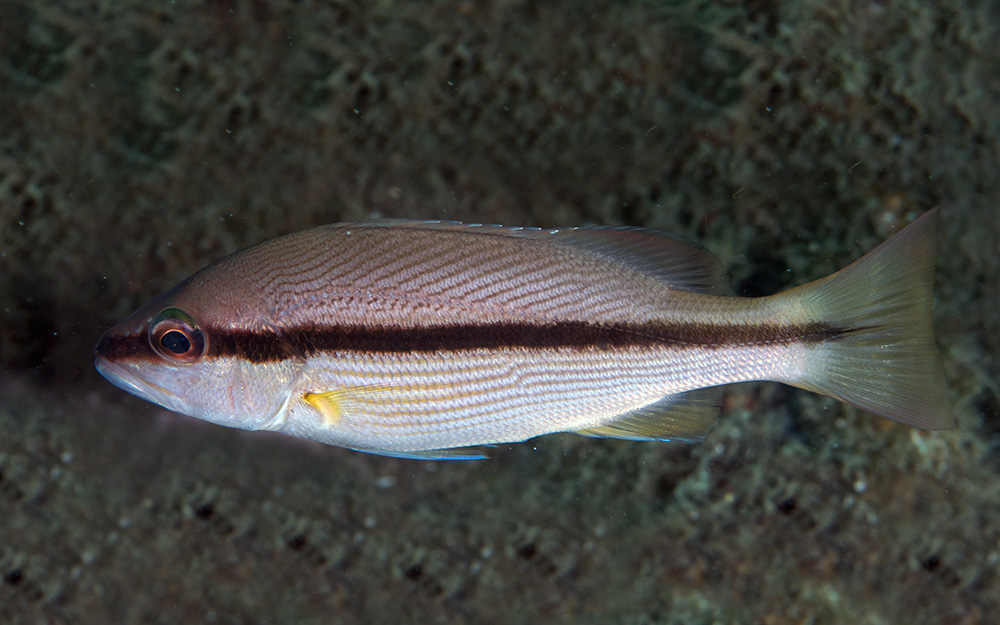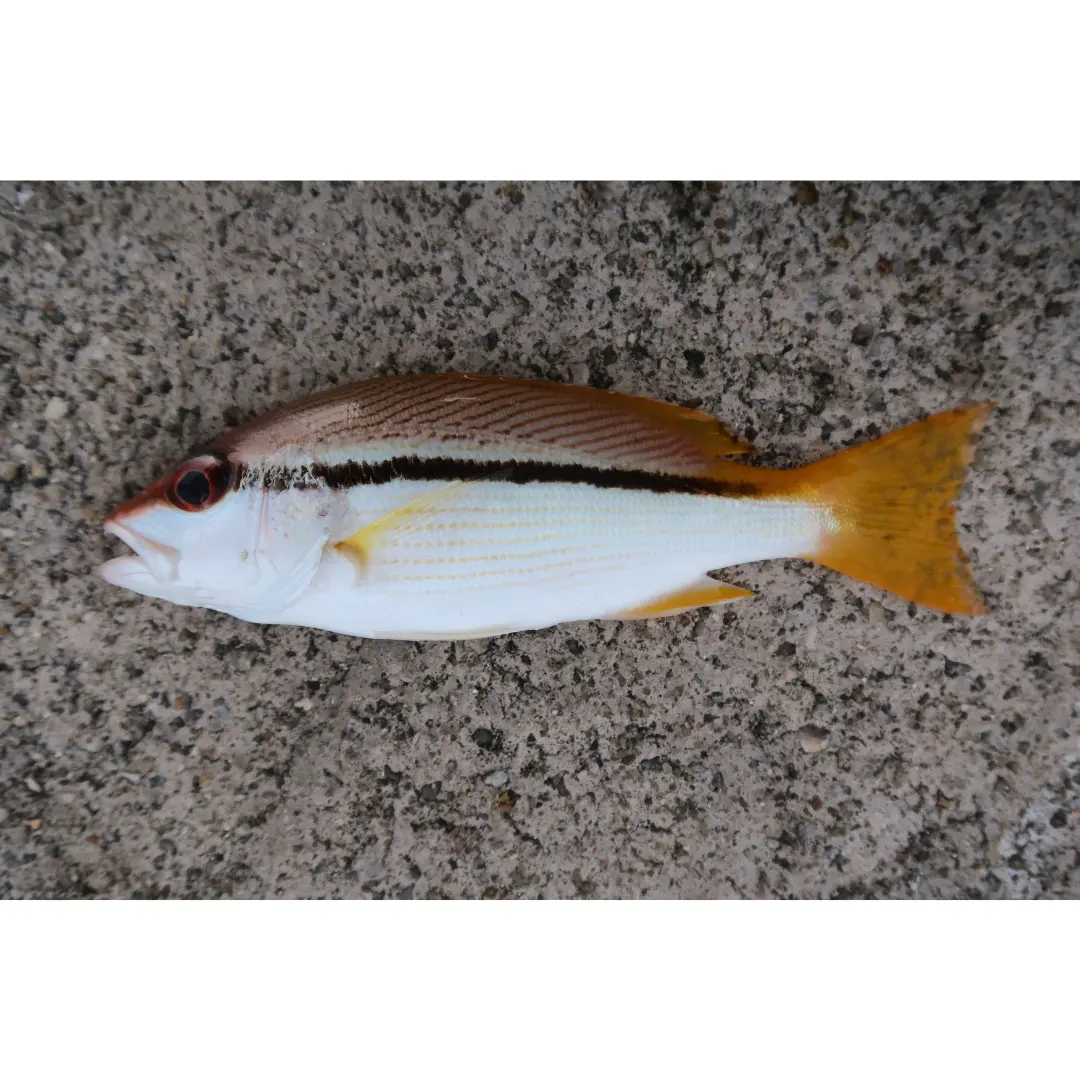Brownstripe red snapper
(Lutjanus vitta)

Classification
General data
Lutjanus vitta has a moderately deep body which has a standard length which is 2.6 to 3.0 times its depth with a moderately steeped forehead. The incision and knob on the preoperculum are poorly developed. The vomerine teeth are arranged on a triangular patch with a rearwards extension or as a rhombus and the tongue has a patch of small grain-like teeth.
The dorsal fin contains 10 spines and 12-14 soft rays while the anal fin has 3 spines and 8-9 soft rays, the rear tips of the dorsal and anal fins are pointed. The pectoral fins contain 15-16 rays and the caudal fin is truncate or weakly emarginate.
This species attains a maximum total length of 40 cm (16 in), although 35 cm (14 in) is more typical.
The overall colour is whitish to pinkish, there is a yellowish-brown to black stripe running along the middle of the flanks. There are very thin oblique stripes above the lateral line and slender longitudinal brown stripes below it. The back and median fins are yellow. The juveniles and subadults have a wider, blacker stripe than the adults.
Lutjanus vitta has a wide Indo-Pacific distribution from the Seychelles and Socotra in the west, the Maldives, southern India and Sri Lanka in the Indian Ocean.
In the western Pacific it is found from Thailand and Indonesia east to New Caledonia, the Gilbert Islands, the Marshall Islands and south to Australia extending north to southern Taiwan.
In Australia it is found from the Houtman Abrolhos islands in Western Australia around the tropical northern coast to Moreton Bay in Queensland, as well as at Ashmore Reef in the Timor Sea.
It occurs at depths between 10 and 72 m (33 and 236 ft). It is found on coral reefs as well as in places where there are low coral outcrops, sponges, and sea whips.












